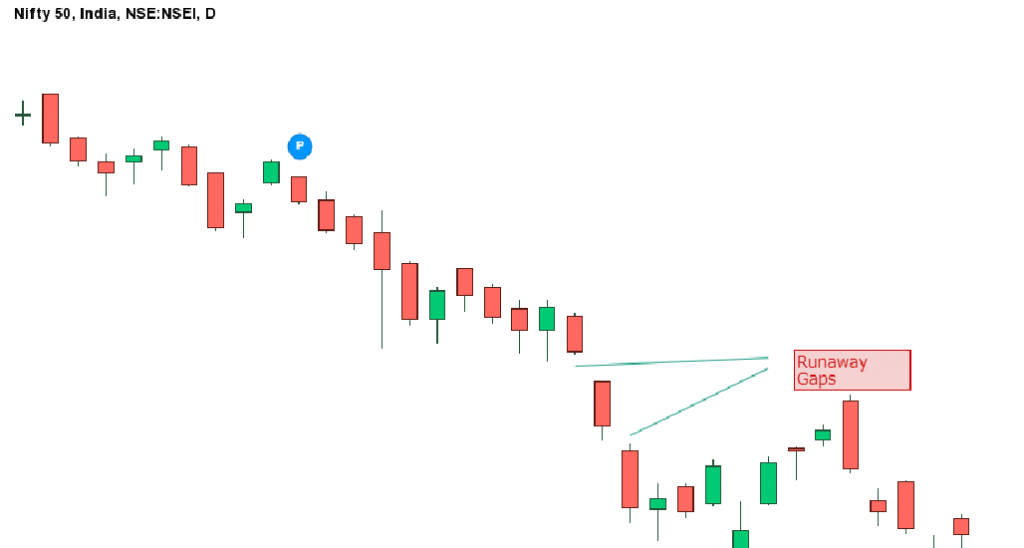What are Gaps in stock market?
What are Gaps in stock market
 In the stock market, a gap occurs when there is a significant difference between the closing price of an asset on one day and the opening price on the following day. A gap is created when the opening price is higher than the previous day`s high price, creating an upward gap, or when the opening price is lower than the previous day`s low price, creating a downward gap.
There are three types of gaps:
Common Gap: This type of gap occurs within the price range of the preceding day and is not associated with any significant news or events.
Breakaway Gap: This type of gap occurs when the price breaks out of a trading range, often accompanied by high trading volume, indicating a significant shift in sentiment.
Exhaustion Gap: This type of gap occurs towards the end of a trend, often accompanied by low trading volume, indicating that the trend may be reaching its end.
Gaps can provide important information to traders and investors. An upward gap may indicate positive news or events, such as an earnings surprise or an announcement of a positive development, which could result in increased buying activity and upward momentum in the price of the asset. Conversely, a downward gap may indicate negative news or events, such as a disappointing earnings report or a negative development, which could result in increased selling activity and downward momentum in the price of the asset.
It`s important to note that gaps can also be caused by market manipulation, and traders should always use caution and consider other technical indicators and market factors before making any trading decisions based solely on a gap. |
Latest Stock Market Tutorials
| 1. What is Descending Triangle Pattern? |
| 2. What is Bearish Pennant Pattern? |
| 3. What is Bearish Flag Pattern? |
| 4. What is Rising Wedge Pattern? |
| 5. What is Double Top Pattern? |
Free Stock Market Tutorials
| 1. Free Fundamental Analysis Course |
| 2. Free Technical Analysis Course |
| 3. Free Price Action Trading Course |
| 4. Free Futures & Options Course |
IMPORTANT ALERT! Information Posting in this website is only for educational purpose. We are not responsible for losses incurred in Trading based on this information.